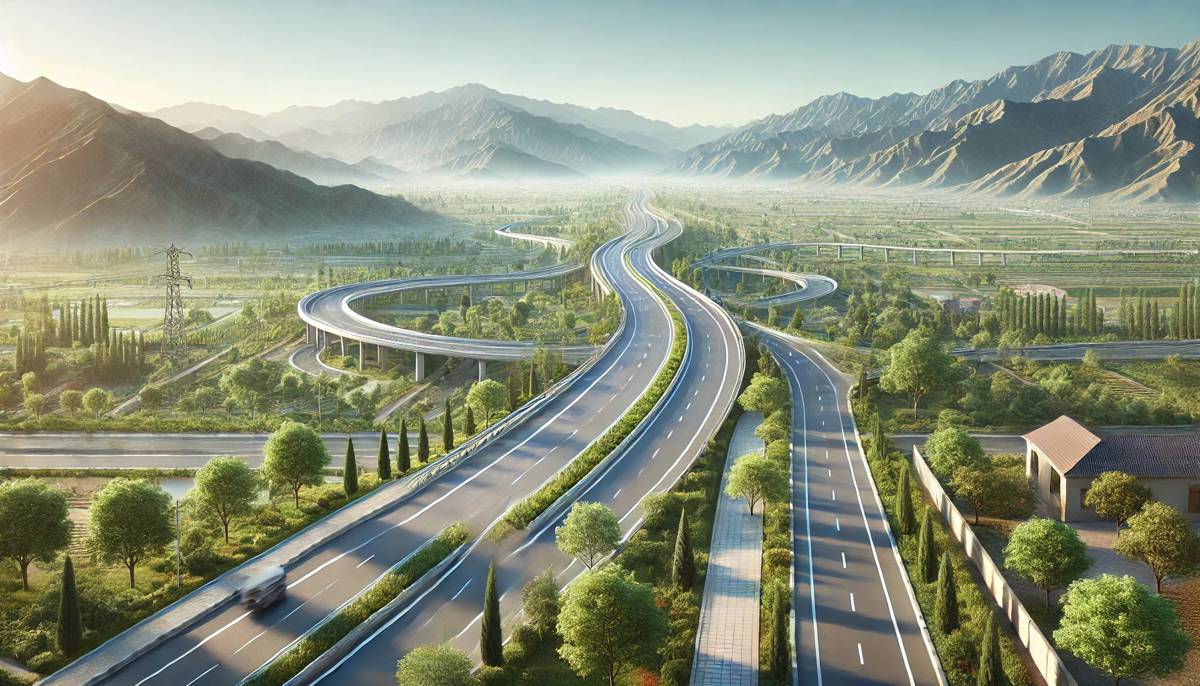ADB Invests $86.67m for Sustainable Infrastructure in Tajikistan
Tajikistan, with its vast landscapes and challenging terrain, is set to transform its road infrastructure, aligning with global standards in green development.
In a strategic move to enhance connectivity and promote sustainability, the Asian Development Bank (ADB) has approved a substantial $86.67 million grant aimed at developing a 49-kilometre “green corridor” on the Dangara–Guliston road. The project marks a significant shift towards eco-conscious infrastructure, integrating climate resilience, safety, and accessibility for local communities.
This development is not just about paving roads—it’s about laying the foundation for a sustainable future in Central Asia. Leveraging ADB’s green roads toolkit, the project introduces pioneering design principles to make the road safer, greener, and more inclusive, particularly for women, children, and people with disabilities.
Upgrading the Dangara–Guliston Road
ADB’s commitment to sustainable development in Central Asia is exemplified through its approach to road design and community involvement. The Dangara–Guliston road, originally built in the 1930s and last reconstructed in the 1970s, will undergo a substantial overhaul.
The project aims to expand this two-lane road into a four-lane thoroughfare, introducing modern design principles that reflect the latest advancements in climate-resilient infrastructure.
Climate-Resilient Design with a Green Twist
Incorporating climate-resilient features is a priority. Through the green roads toolkit, ADB and its partners are embedding climate adaptation measures that will withstand extreme weather and reduce environmental impact. Beyond resilience, the project aims to curb pollution and conserve local biodiversity, making it a model of environmentally conscious development.
This toolkit, co-developed with the International Road Federation and MetaMeta Research, serves as a blueprint for achieving environmental, social, and economic balance in road infrastructure. It guides planners, engineers, and decision-makers in integrating sustainable practices across the entire road lifecycle—from planning and design to maintenance.
A Road Built with Communities in Mind
While transforming the road’s physical structure, ADB also prioritises enhancing community well-being and safety. Dedicated cycle lanes, sidewalks, and well-lit, clearly marked crossings are among the new safety measures. Each safety element has been fine-tuned through a community co-design process, ensuring it genuinely addresses local needs.
With inclusivity at its core, the project will add features like accessible pathways, preferential seating at public transport stops, and convenient facilities such as dedicated toilets and changing rooms for mothers with young children. The objective is to create a welcoming environment for all, particularly those who face added challenges in mobility. Improved lighting and carefully planned crossing points aim to reduce accident risks, addressing the unique requirements of women, children, and people with disabilities.
Electrifying the Future
As Tajikistan navigates the path toward green energy, electric vehicle (EV) infrastructure remains an untapped area of potential. The project includes two pilot EV charging stations along the Dangara–Guliston corridor, setting the stage for a national rollout of EV infrastructure. These stations represent a first step in catalysing private investment and building an accessible charging network in rural and urban Tajikistan alike.
The lack of EV infrastructure in Tajikistan has hindered the country’s ability to embrace green transport solutions fully. However, with frameworks designed to attract private-sector investment, ADB’s initiative is primed to drive significant changes, bringing the EV market closer to reality in Central Asia.
Economic and Educational Opportunities for Local Communities
Beyond infrastructure, the project has a strong focus on community empowerment, especially for women. Recognising that infrastructure investment can also enhance livelihoods, ADB plans to provide entrepreneurship training to women living in and around the project area. These training programs will equip participants with the skills and knowledge necessary to start small businesses, fostering local economic growth.
Selected participants will have the opportunity to receive entrepreneurship grants, creating pathways to financial independence and a stronger local economy. With women disproportionately affected by limited employment options in rural areas, this initiative addresses economic disparities and fosters an environment where small businesses can thrive.
Collaborative Funding for a Greener Future
ADB’s investment is bolstered by partnerships that strengthen the project’s reach and resources. The Tajik government will contribute $23 million in counterpart funding, while the European Bank for Reconstruction and Development (EBRD) has committed to a $40 million co-financing loan, pending approval from its board in early 2025.
With the Ministry of Transport at the helm, the project’s timeline stretches to 2030, ensuring thorough planning and phased implementation. The collaboration between ADB, EBRD, and the Tajik government reflects a collective commitment to not only modernising infrastructure but also setting a standard for eco-friendly development across the region.
ADB’s Legacy of Support in Tajikistan
Tajikistan has been an active partner with ADB since 1998, benefiting from a robust development pipeline across sectors such as road and energy infrastructure, health, education, and urban development. In total, ADB’s support for Tajikistan exceeds $2.7 billion, with over $2.2 billion dedicated to grants that empower the nation to meet evolving demands.
ADB’s mission to build a prosperous, inclusive, resilient, and sustainable Asia and the Pacific underscores its enduring partnership with Tajikistan, making strides towards eliminating extreme poverty and uplifting communities across the region.
Tajikistan’s Role in Green Transport Leadership
Tajikistan’s green corridor initiative sets an important precedent for sustainable infrastructure in Central Asia. As ADB continues to champion projects that prioritise environmental stewardship and social inclusion, Tajikistan’s Dangara–Guliston corridor will stand as a model for other developing nations seeking a balanced, forward-thinking approach to infrastructure.
This project represents more than a road; it’s a commitment to future generations, proving that modern infrastructure can and should align with the needs of people and the planet. By embracing green principles and investing in communities, Tajikistan is carving out a leadership role in Central Asia’s sustainable transport future.





















